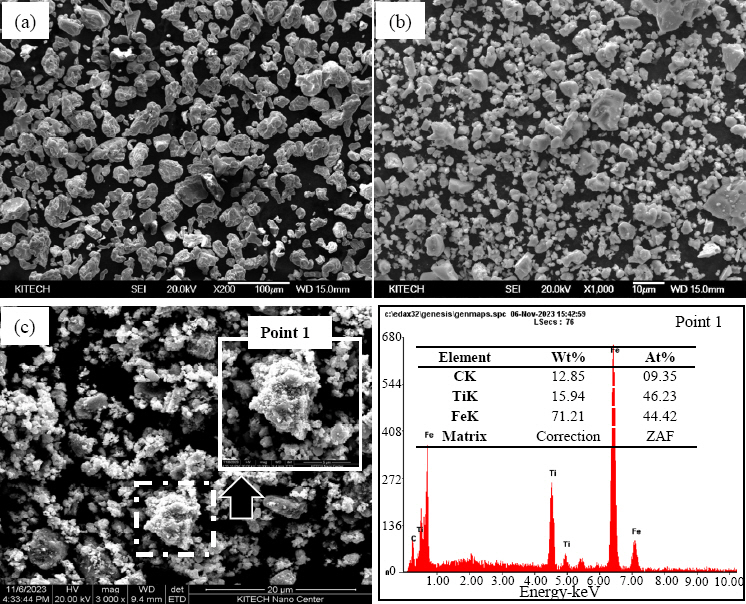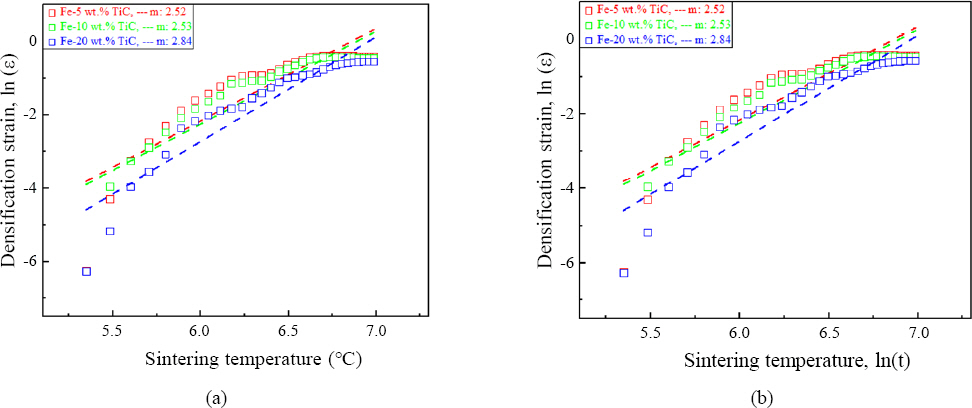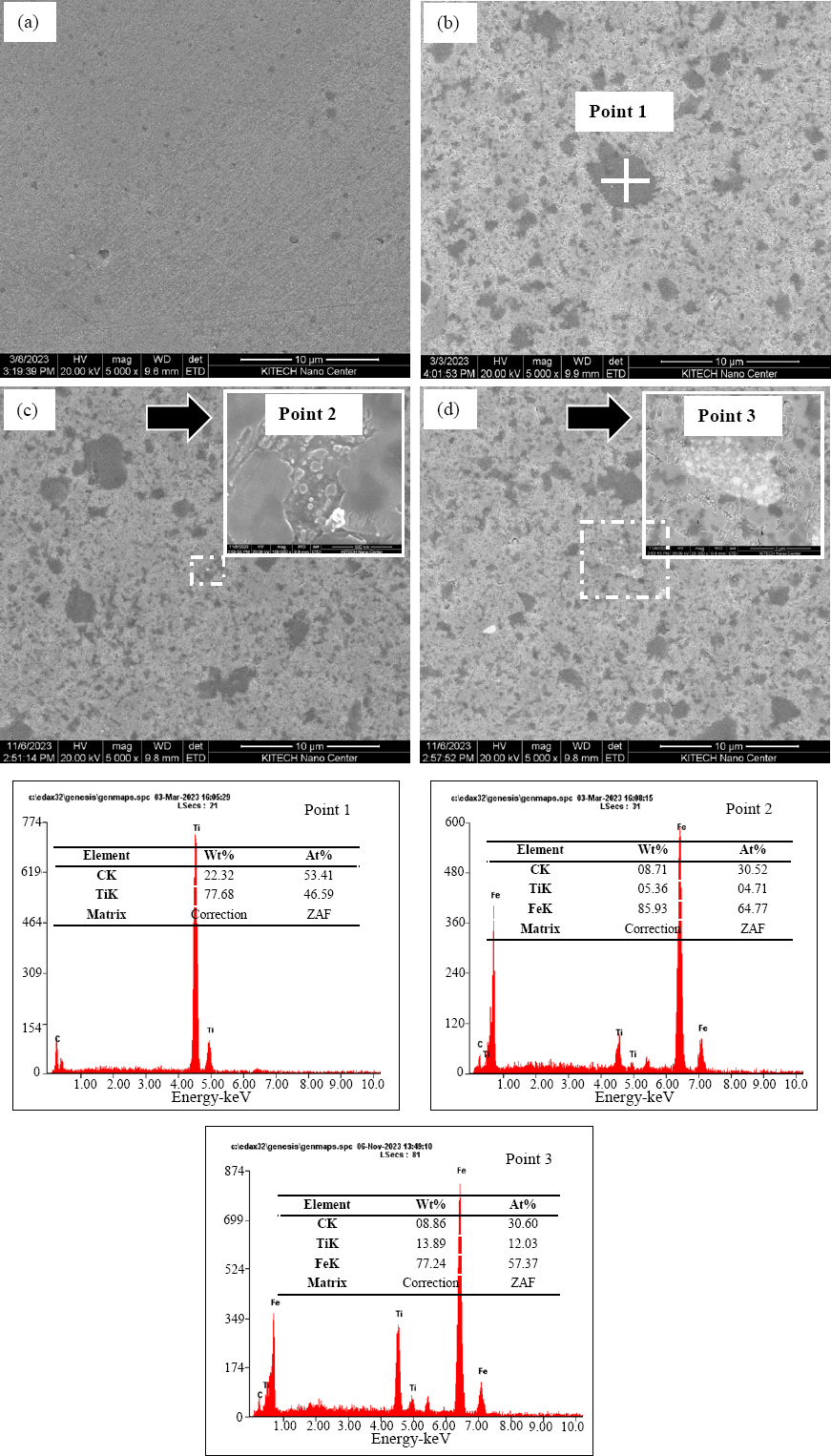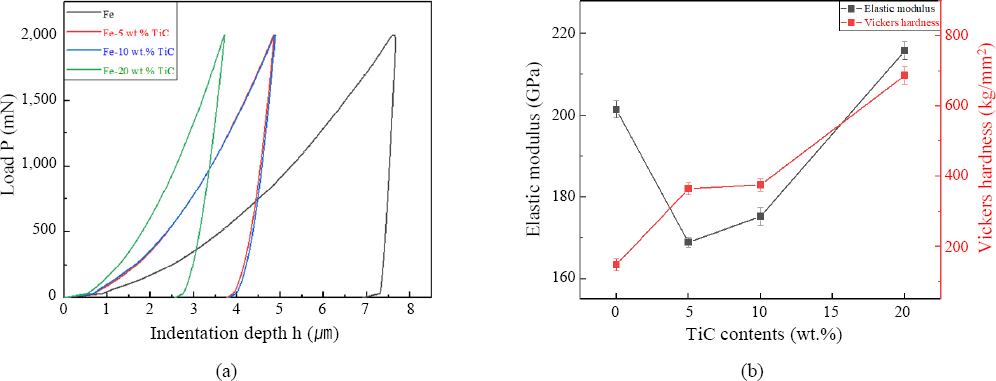1. S. J. Kim, C. G. Lee, and S. S. Kim, ļ¦łņ░░ĻĄÉļ░śņÜ®ņĀæĻĖ░ņłĀņØś Ļ░£ļ░£Ļ│╝ ņØæņÜ®, Korea. Inst. Met. Mater.(KIMS). 16(1) (2004) 82ŌĆō90.
2. H. K. Park, H. J. Youn, J. H. Ryu, J. H. Jang, I. J. Shon, and I. H. Oh, Mechanical properties and fabrication of WC-Co hard materials by rapid sintering method for friction stir welding tool application,
J. Weld. Join. 30(6) (2012) 92ŌĆō92.
https://doi.org/10.5781/KWJS.2012.30.6.578
[CROSSREF] 4. K. Gurukrishna, H. R. Nikhita, S. M. Mallikarjuna Swamy, and A. Rao, Existence of Partially Degenerate Electrical Transport in Intermetallic Cu2SnS3 Thermo- electric System Sintered at Different Temperatures,
Met. Mater. Int. 28 (2022) 2023ŌĆō2032.
https://doi.org/10.1007/s12540-021-01074-8
[CROSSREF] 8. H. Liao, J. Chen, L. Peng, J. Han, H. Yi, F. Zheng, Y. Wu, and W. Ding, Fabrication and characterization of magnesium matrix composite processed by combination of friction stir processing and high-energy ball milling,
Mater. Sci. Eng. A. 683 (2017) 207ŌĆō214.
https://doi.org/10.1016/j.msea.2016.11.104
[CROSSREF] 11. D. Bartkowski, Manufacturing Technology and Properties of Fe/TaC Metal Matrix Composite Coatings Produced on Medium Carbon Steel Using Laser Processing- Preliminary Study on the Single Laser Tracks,
Materials. 14(18) (2021) 5367.
https://doi.org/10.3390/ma14185367
[CROSSREF] [PMC] 14. W. Su, Y. X. Sun, H. L. Yang, X. Q. Zhang, J. M. Ruan, and T. Nonferr, Effects of TaC on microstructure and mechanical properties of coarse grained WC-9Co cemented carbides,
Trans. Nonferrous Met. Soc. China. 25(4) (2015) 1194ŌĆō1199.
https://doi.org/10.1016/S1003-6326(15)63715-3
[CROSSREF] 16. G. A. Sweet, M. Brochu, R. L. Hexemer Jr, I. W. Donaldson, and D. P. Bishop, Consolidation of alumi- nium-based metal matrix composites via spark plasma sintering,
Mater. Sci. Eng. A. 648 (2015) 123ŌĆō133.
https://doi.org/10.1016/j.msea.2015.09.027
[CROSSREF] 17. X. X. Li, C. Yang, T. Chen, L. C. Zhang, M. D. Hayat, and P. Cao, Influence of powder shape on atomic diffusivity and resultant densification mechanisms during spark plasma sintering,
J. Alloys Compd. 802 (2019) 600ŌĆō608.
https://doi.org/10.1016/j.jallcom.2019.06.176
[CROSSREF] 22. N. Zhao, Y. Xu, L. Zhong, Y. Yan, K. Song, L. Shen, and V. E. Ovcharenko, Fabrication, microstructure and abrasive wear characteristics of an in situ tantalum carbide ceramic gradient composite,
Ceram. Int. 41(10, Part A) (2015) 12950ŌĆō12957..
https://doi.org/ 10.1016/j.ceramint.2015.06.138
[CROSSREF] 24. S. Suwanboon, P. Amornpitoksk, and A. Sukolrat, Dependence of optical properties on doping metal, crystallite size and defect concentration of M-doped ZnO nanopowders (M=Al, Mg, Ti),
Ceram. Int. 37(4) (2011) 1359ŌĆō1365.
https://doi.org/10.1016/j.ceramint.2010.12.010
[CROSSREF] 25. K. Venkateswarlu, M. Sandhyarani, T. A. Nellaippan, and N. Rameshbabu, Estimation of Crystallite Size, Lattice Strain and Dislocation Density of Nanocrystalline Carbonate Substituted Hydroxyapatite by X-ray Peak Variance Analysis,
Proc. Mater. Sci. 5 (2014) 212ŌĆō221.
https://doi.org/10.1016/j.mspro.2014.07.260
[CROSSREF] 26. J. H. Kim, J. H. Lee, J. H. Jang, I. H. Oh, S. K. Hong, and H. K. Park, Property evaluation of Tungsten-car-bide hard materials as a function of Fe contents,,
Korean J. Met. Mater. 58(8) (2020) 533ŌĆō533.
https://doi.org/10.3365/KJMM.2020.58.8.533
[CROSSREF] 27. M. Mahmoodan, H. Aliakbarzadeh, and R. Gholamipour, Microstructural and mechanical characterization of high energy ball milled and sintered WC-10 wt.%Co- xTaC nano powders,
Int. J. Refract. Met. Hard Mater. 27(4) (2009) 801ŌĆō801.
https://doi.org/10.1016/j.ijrmhm.2009.02.001
[CROSSREF] 28. J. Peng, H. Dong, M. Hojamberdiev, D. Yi, Y. Yang, H. Bao, H. Li, H. Li, D. Mao, and L. Meng, Improving the mechanical properties of tantalum carbide particle-reinforced iron-based composite by varying the TaC contents,
J. Alloys Compd. 726 (2017) 896ŌĆō905.
https://doi.org/10.1016/j.jallcom.2017.08.050
[CROSSREF] 30. G. Y. Lee, C. B. Lee, S. I. Kim, and C. U. Lee, The measurement errors of elastic modulus and hardness due to the different indentation speed,
J. Korean Vac. Soc. 19 (2010) 360ŌĆō364.
[CROSSREF]










 PDF Links
PDF Links PubReader
PubReader ePub Link
ePub Link Full text via DOI
Full text via DOI Download Citation
Download Citation Print
Print



